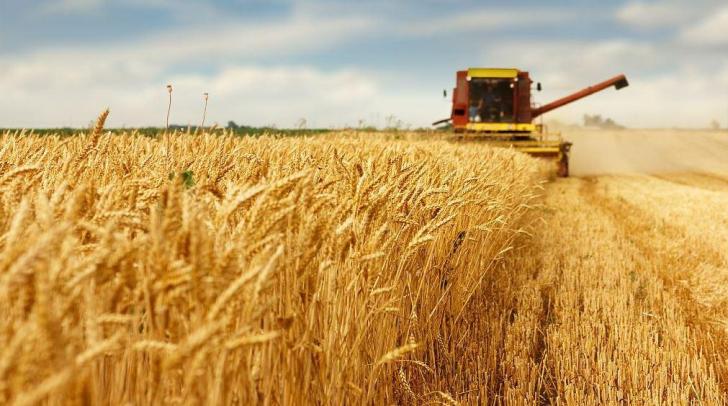News / National
Zimbabwe to achieve targeted metric tonnes of winter wheat
23 Aug 2024 at 16:12hrs |
0 Views

The government has announced that Zimbabwe is on track to meet its goal of producing 600,000 metric tonnes of winter wheat by the end of the 2024/25 season, a crucial step in its pursuit of food security and self-sufficiency.
As the 2024/25 winter wheat production cycle nears its peak, harvesting is expected to commence soon. Speaking in an interview on Wednesday, Obert Jiri, the Permanent Secretary in the Ministry of Lands, Agriculture, Fisheries, Water, and Rural Development, expressed confidence in the country’s ability to achieve this milestone.
"We are entering the final phase of our wheat production. Most of the crop has reached the hard-dough stage, indicating that in about two to three weeks, we will begin the harvesting process," Prof Jiri explained.
He underscored the importance of the coming weeks, emphasizing that the entire 121,962 hectares of wheat are vital to Zimbabwe’s food security objectives.
"Our primary focus now is on protecting the crop, particularly against threats like the quelea bird, which could jeopardize the yield we’ve worked hard to secure. The success of this harvest is critical for our nation’s journey towards food self-sufficiency, and we are committed to ensuring it is safeguarded," Jiri said.
To counter these threats, the government has ramped up quelea bird control efforts, deploying both ground and aerial units to protect the crop. This includes the use of vehicle-mounted sprayers, knapsack sprayers, and drones to manage quelea sightings as necessary.
Meanwhile, Leonard Munamati, Acting Chief Director of Agricultural and Rural Development Advisory Services, visited Chingonzo's farm in Macheke, Murehwa District, where 40 hectares of wheat have been planted. The farm is expected to yield between 7-9 tonnes per hectare.
"The focus now is on maintaining good agronomic practices, controlling quelea birds, and ensuring a timely harvest. With the possibility of early rains, it's crucial for farmers to begin preparations now to avoid delays that could result in significant losses. We are urging everyone to book their combine harvesters in advance to ensure a smooth and efficient harvesting process," Munamati advised.
Chingonzo also encouraged fellow farmers to start preparing for the harvest by securing combine harvesters early to avoid potential losses from the anticipated early rains.
In preparation for the upcoming harvest, the government has mobilized nearly 200 combine harvesters to facilitate the efficient gathering of the crop.
As Zimbabwe approaches the final stages of this year’s wheat production cycle, the government remains optimistic that the target of 600,000 metric tonnes will be achieved, marking a significant step toward ensuring national food security.
As the 2024/25 winter wheat production cycle nears its peak, harvesting is expected to commence soon. Speaking in an interview on Wednesday, Obert Jiri, the Permanent Secretary in the Ministry of Lands, Agriculture, Fisheries, Water, and Rural Development, expressed confidence in the country’s ability to achieve this milestone.
"We are entering the final phase of our wheat production. Most of the crop has reached the hard-dough stage, indicating that in about two to three weeks, we will begin the harvesting process," Prof Jiri explained.
He underscored the importance of the coming weeks, emphasizing that the entire 121,962 hectares of wheat are vital to Zimbabwe’s food security objectives.
"Our primary focus now is on protecting the crop, particularly against threats like the quelea bird, which could jeopardize the yield we’ve worked hard to secure. The success of this harvest is critical for our nation’s journey towards food self-sufficiency, and we are committed to ensuring it is safeguarded," Jiri said.
To counter these threats, the government has ramped up quelea bird control efforts, deploying both ground and aerial units to protect the crop. This includes the use of vehicle-mounted sprayers, knapsack sprayers, and drones to manage quelea sightings as necessary.
Meanwhile, Leonard Munamati, Acting Chief Director of Agricultural and Rural Development Advisory Services, visited Chingonzo's farm in Macheke, Murehwa District, where 40 hectares of wheat have been planted. The farm is expected to yield between 7-9 tonnes per hectare.
"The focus now is on maintaining good agronomic practices, controlling quelea birds, and ensuring a timely harvest. With the possibility of early rains, it's crucial for farmers to begin preparations now to avoid delays that could result in significant losses. We are urging everyone to book their combine harvesters in advance to ensure a smooth and efficient harvesting process," Munamati advised.
Chingonzo also encouraged fellow farmers to start preparing for the harvest by securing combine harvesters early to avoid potential losses from the anticipated early rains.
In preparation for the upcoming harvest, the government has mobilized nearly 200 combine harvesters to facilitate the efficient gathering of the crop.
As Zimbabwe approaches the final stages of this year’s wheat production cycle, the government remains optimistic that the target of 600,000 metric tonnes will be achieved, marking a significant step toward ensuring national food security.
Source - newsday
Join the discussion
Loading comments…






























